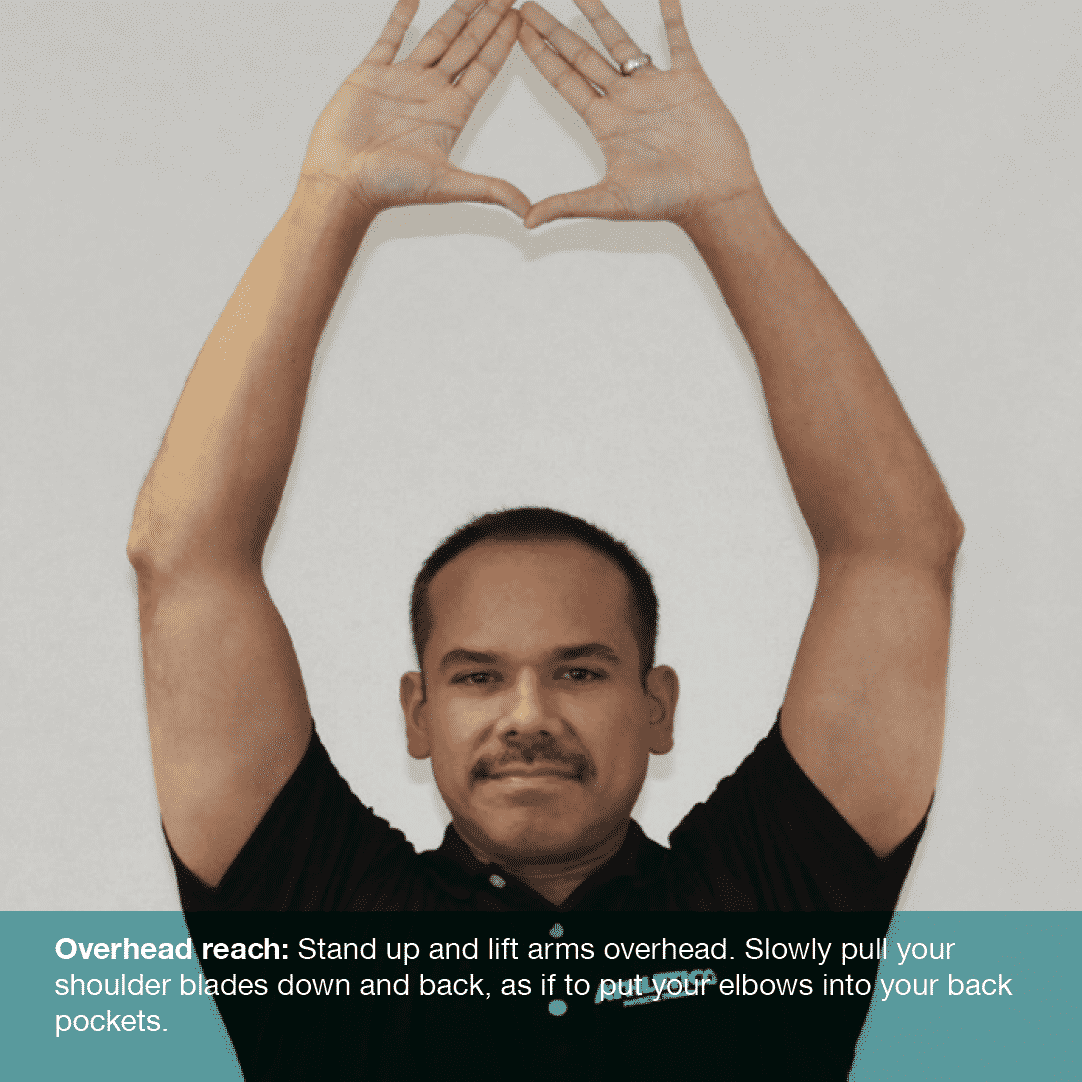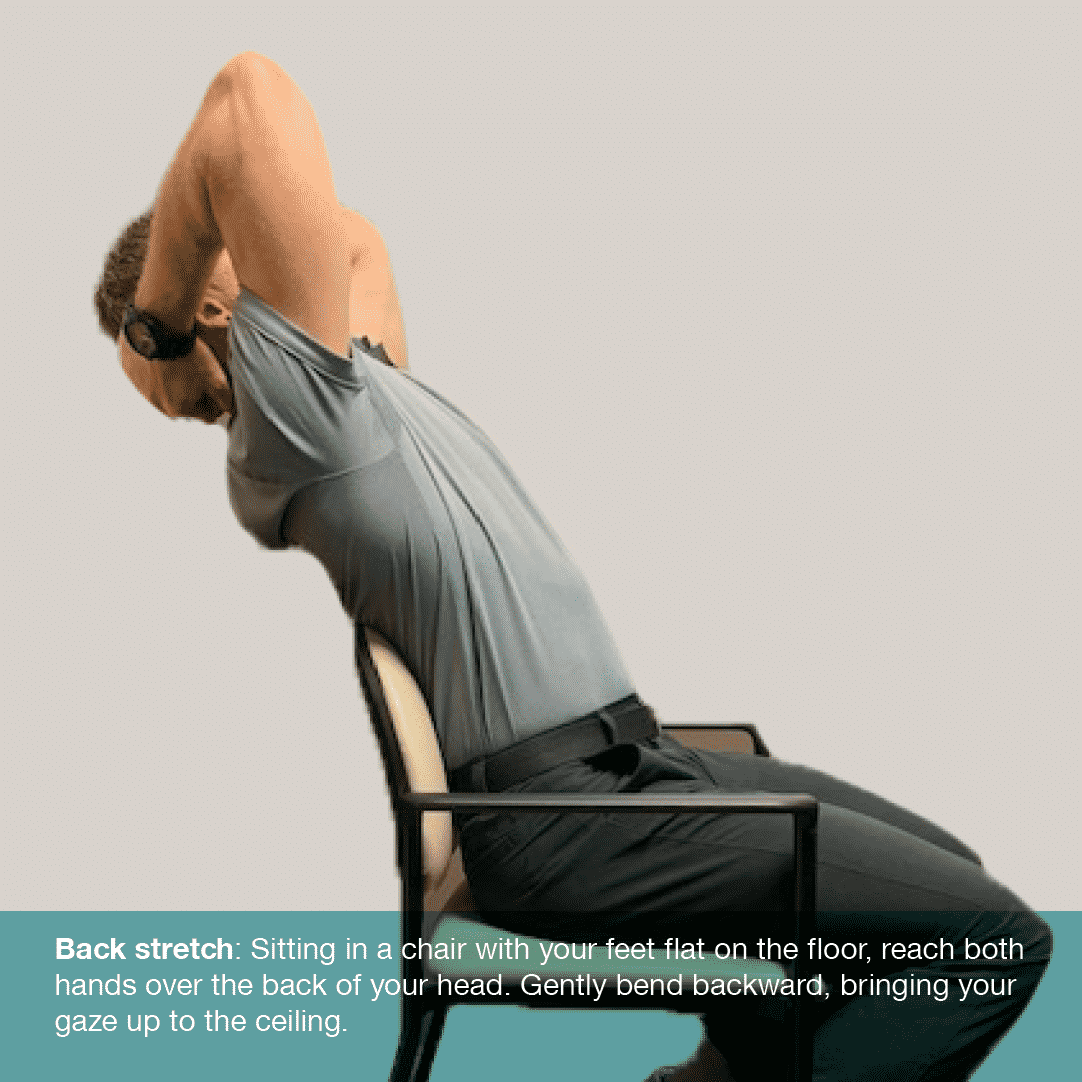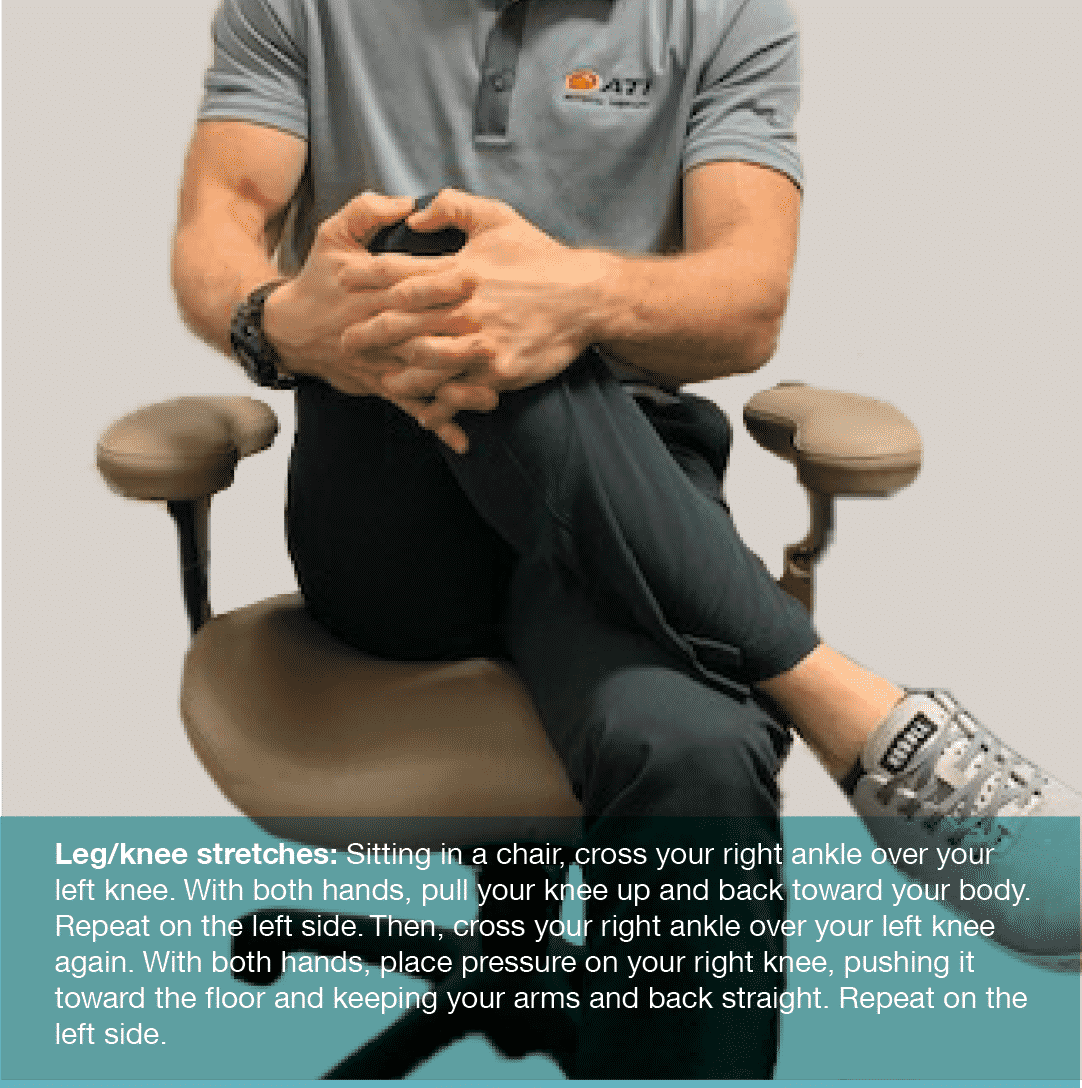The typical American office worker spends eight to 10 hours a day seated behind a desk. This sedentary lifestyle can contribute to multiple injuries and disorders ranging from carpal tunnel syndrome to back pain and tendinitis.
Each year about 1.8 million U.S. workers report work-related musculoskeletal disorders, according to the Occupational Safety and Health Administration.
But sitting in a desk chair for hours doesn’t mean you need to be prone to musculoskeletal disorders. Simple stretches can help reduce stress, strain and injury.
The biggest hazards of sitting at a desk all day include neck pain, hand or elbow pain and compression on the spine, says Diane Newquist, vice president of clinical operations/work comp at Athletico Physical Therapy in Oak Brook.
“Typically, sitting all day puts more compression on your spine, and poor posture can increase stress,” Newquist says. “It’s important to get up and move during the day, as movement is life and brings oxygen to the tissues.”
Being sedentary is also linked with increased hospitalization, cancer, diabetes and cardiovascular disease, says Amanda Clark, PT, DPT, SCS, with ATI Physical Therapy, which is based in Bolingbrook.
The typical desk worker’s head-forward, rounded-shoulder posture can create stress on the body, she says. Just getting up and moving — whether stretching during a break or taking a long walk during lunch — can make a big difference.
“That forward-head position is asking your upper [trapezius] muscles to hold your head up in the air and also asking the muscles behind your shoulder blades to hold you in that position. So if you get out of that position for a little bit, it gives those muscles a break,” Clark says.
Simple chest, neck and hamstring stretches can help by increasing blood flow to muscles and getting you out of static postures, Clark adds.
Over time, the body may adapt to poor form, Newquist says, so it’s important to counter that with conscious movements. Reversal of posture exercises can help realign the body and counter physical stress during the work day.
“Creating movement through reversal of posture exercises and stretching allows the body to work in its most efficient posture,” Newquist says. “The more efficient the posture, the less work your muscles have to do, which minimizes muscle fatigue and exhaustion.”
Having correct ergonomics, like correct placement of your computer monitor, correct sitting posture and the use of a telephone headset, can help too, Clark says.
“The most important thing is to listen to your body, especially if you’re feeling discomfort,” Newquist says.
Athletico and ATI recommend the following stretches to help office workers prevent the onset of pain, disorders or injury. However, if you’re being treated for an injury, check with your physician before trying these exercises.
Positions should be held for five to 10 seconds. Repeat each stretch two to three times.
- Overhead reach: Stand up and lift arms overhead. Slowly pull your shoulder blades down and back, as if to put your elbows into your back pockets.
- Forearm stretch: Start with one arm straight out at chest level, fingertips up. Use the opposite hand to grab the palm of your outstretched hand, pulling it back toward you. Repeat on the opposite side.
- Backward bend: Standing up, place both hands on your hips and lean back gently, allowing your back to arch.
- Neck stretch: With your right arm, reach over the top of your head and stretch your head toward the right shoulder, keeping your left shoulder down. Repeat on the left side.
- Back stretch: Sitting in a chair with your feet flat on the floor, reach both hands over the back of your head. Gently bend backward, bringing your gaze up to the ceiling.
- Leg/knee stretches: Sitting in a chair, cross your right ankle over your left knee. With both hands, pull your knee up and back toward your body. Repeat on the left side. Then, cross your right ankle over your left knee again. With both hands, place pressure on your right knee, pushing it toward the floor and keeping your arms and back straight. Repeat on the left side.


















